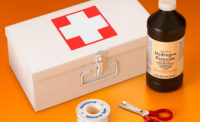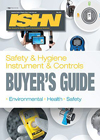Think the office you work in is a relatively tame environment, hazard-wise? Ever consider the fact that printers – a common piece of workplace equipment – emit chemicals into the air?
With this in mind, researchers from the National Institute for Occupational Safety and Health (NIOSH) are exploring the potential effects of various types of printers – including the increasingly popular 3-D printers -- on indoor air quality, in order to develop ways to prevent exposure to workers.
Using the cover helps, but...
A previous study by NIOSH and university researchers found that using the manufacturer-supplied cover on the 3-D printer decreased the amount of emissions containing ultrafine particles by two times, but the levels were still high.
The current study, published in the Journal of Occupational and Environmental Hygiene, measured printer emissions using a specially designed stainless steel chamber that can be set to simulate realistic office conditions in terms of temperature and humidity. Researchers tested the most commonly used type of desktop 3-D printer, called the FDM, and two models of black and white laser printers. For the 3-D printers, the researchers printed a hair comb using one of two types of plastic filaments. The printing time for each comb was about 14 minutes.
3-D printers emit styrene
They found that certain chemicals, known as volatile organic compounds, were significantly lower with laser printers compared to 3-D printers. At the same time, the 3-D printers emitted 14 chemicals that laser printers did not emit. In addition, 3-D printer emissions likely combined to form other chemicals. Even after printing, 3-D printed objects emitted the chemical styrene, indicating that exposure beyond the actual process of printing may be a concern in the work place. Both the 3-D printer, using a certain type of plastic filament called ABS, and the laser printers emitted ultrafine particles that contained the toxic chemical chromium. The results of this research can help inform future studies aimed at measuring and controlling work-related exposure to 3-D printer emissions.
More information is available:


